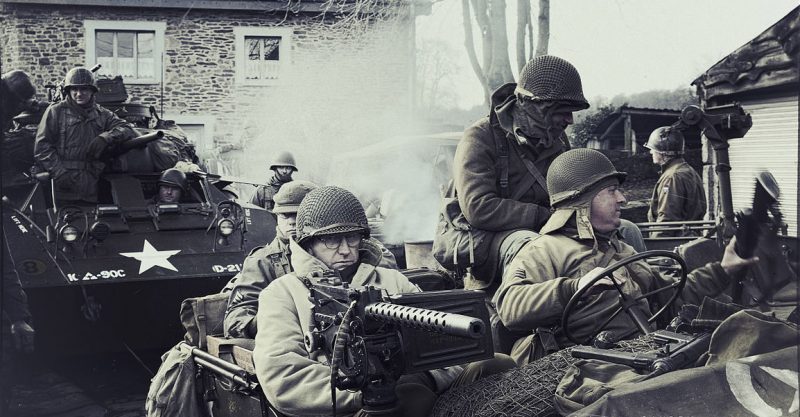On December 16, 1944, the German army launched Operation Autumn Fog. Hitler’s last great offensive of World War II, Autumn Fog sent Allied troops reeling in the Battle of the Bulge. But while chaos struck the Allied lines, in the Belgian border village of Lanzerath a single American platoon would hold up an entire SS panzer corps.
Lyle Bouck’s Platoon
December 16 was the day before Lyle Bouck’s 21st birthday. Most young American men his age would have been celebrating with family and friends.
Bouck’s birthday promised to be very different. Early in the war, he had applied to transfer from his National Guard unit to officer training. He did so well that he was kept on at the training camp as an instructor, before being transferred to 99th Infantry Division for the war in Europe. He arrived in France in November 1944 and was soon on the Ardennes front.
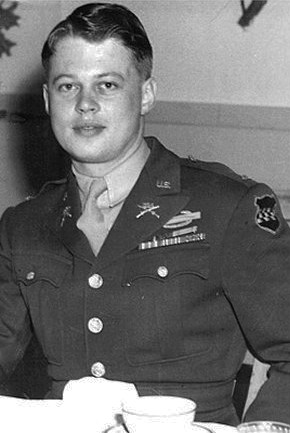
Bouck commanded an intelligence and reconnaissance platoon in the 394th Infantry Regiment. The unit had carried out recon but was not intended or trained for front-line action. The men had little combat experience, but that was about to change.
Taking Position at Lanzerath
On December 10, Bouck’s platoon was sent to fill a gap in the lines near the Belgian village of Lanzerath. This position faced into the Ardennes forest.
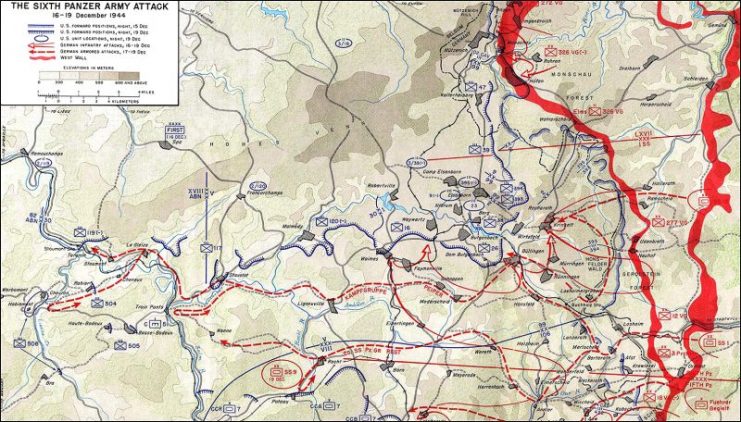
This part of the Allied lines was thinly defended. Though it has since been argued that this was a deliberate trap for the Germans, the official story is still that the Allies did not believe the Germans could attack through the forest, despite their having done so only four years before.
Bouck took his job seriously. He and his men dug in deeper, reinforcing their foxholes. He acquired extra automatic weapons, improving their firepower.
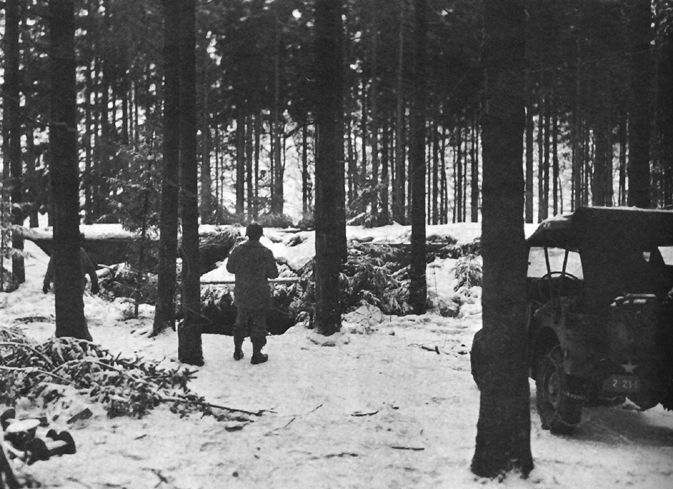
The Germans Attack
On the morning of December 16, the Germans attacked.
This was Hitler’s last great offensive, an attempt to divide the Allied lines and shatter their advance into Germany. Every man and tank the Germans could spare was thrown into the assault. Speed was of the essence. They had to gain a strategic victory before the Allies could rally their superior resources.
The troops sent against Lanzerath consisted of 550 infantry from the 1st SS Panzer Division. They were to overrun the Americans and make a gap through which the 6th Panzer Army could advance.
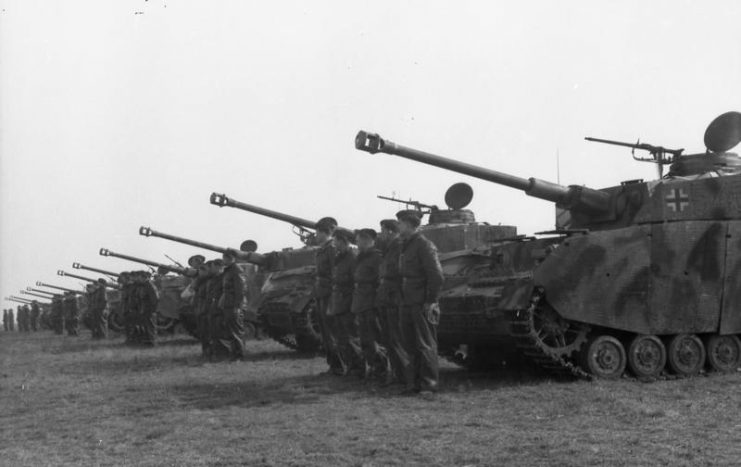
The German division had taken heavy casualties in Normandy. Because of this, there had been many replacements. Though well equipped, most of the men had as little experience as their American opponents. But they had a huge advantage in numbers – 550 men against 18.
At 0530, German artillery opened fire. The air was filled with shrapnel and the splinters of disintegrating trees. At 0800, the infantry advanced.
Holding the Line
Bouck and his men quickly found themselves cut off from help. The armored unit supporting them had withdrawn in the face of the German bombardment. Lines of communication had been cut by the barrage.

The platoon saw hundreds of Germans advancing on them from the east. Though their phone lines had been cut and the Germans were blocking the airwaves, Bouck managed to radio through to regimental headquarters, asking permission to withdraw and start a delaying action. He was told that he had to hold his ground.
The Germans advanced into Lanzerath and fighting began. Three of the Americans were captured. The rest held their positions on a ridge outside the village. There were 19 of them – 15 of Bouck’s unit and 4 artillery observers.
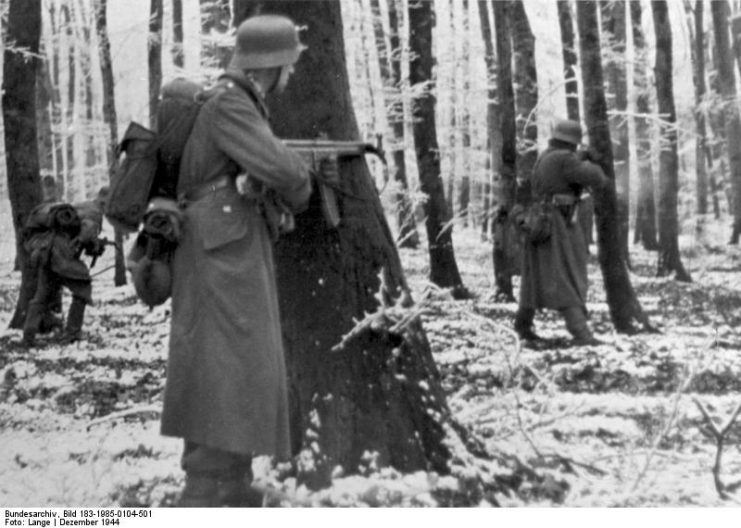
Bouck radioed headquarters again and asked for artillery support. None came. The man he spoke to didn’t even believe his description of the German attack. Bouck knew that he had to hold out, or the whole division could be outflanked.
At first, Bouck let the Germans advance without attacking them, in hopes of catching them by surprise. Seeing a local woman gesturing in his direction, he believed that she had told the Germans where the Americans were.
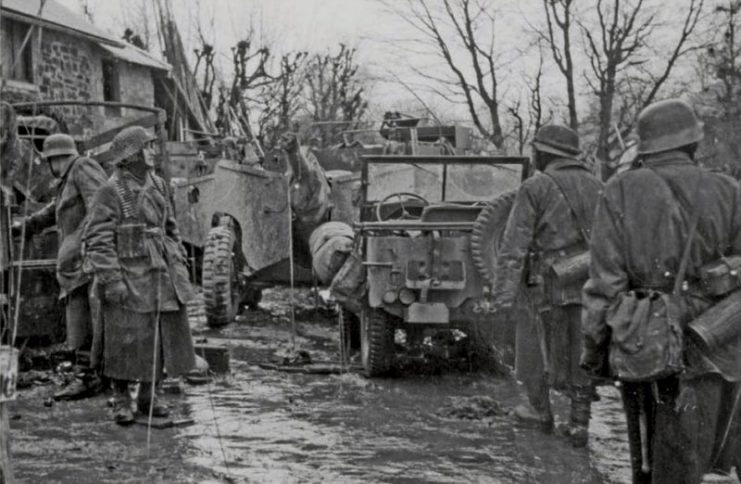
The Americans opened fire, and the fighting began in earnest. The Germans launched a frontal assault. They were caught in the Americans’ carefully prepared fields of fire, and the attack was stopped in less than a minute.
Over the course of the day, the Germans launched more direct assaults. Every time, they were held off by Bouck and his men, defending their prepared positions. A few Americans were wounded but most remained untouched, while the ground was littered with German casualties.
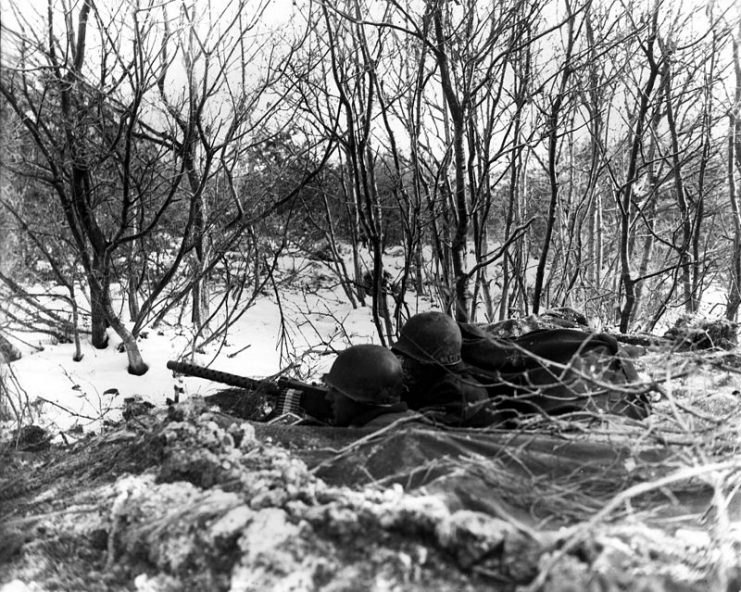
Outflanked
As dusk approached, the Americans were running low on ammunition. Bouck’s radios had been destroyed, preventing him from getting new orders or information. He decided to prepare for a withdrawal to avoid being overrun, but it was too late. 50 Germans had been sent around the southern flank. Just as Bouck was about to signal the retreat, the enemy attacked.
The Germans overran the American foxholes one by one. Despite the heavy fighting that had come before, they didn’t just shoot the Americans, but let them surrender. Bouck himself was injured and surrendered to the Germans. He spent his 21st birthday as he would spend the next six months: a prisoner of war.
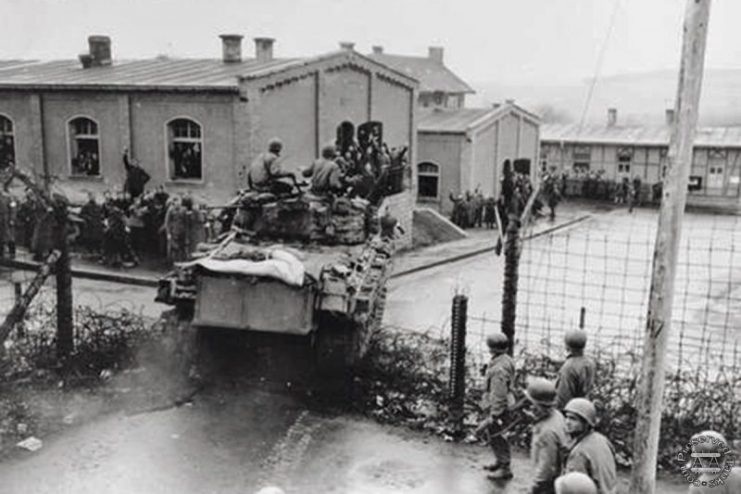
Belated Recognition
14 of Bouck’s 18 men who took part in the fighting were injured, but none died. One of the artillery observers was killed. The Germans lost 16 dead, 63 wounded, and 13 missing in action. Critically, their advance was held up for nearly an entire day.
Read another story from us: Allies Knew About Battle of the Bulge – Why they Ignored Intelligence
Because they were cut off and captured, no one realized at the time what the American recon troops had achieved. It was only years later that Bouck realized he had helped delay a crucial part of the German advance.
After a long period of lobbying, in October 1981 every member of the unit had their courageous actions recognized, making them the most decorated American platoon of the Second World War.
A small monument now marks the place where Bouck and his men fought so bravely, and is a well-earned tribute to their amazing achievement.
